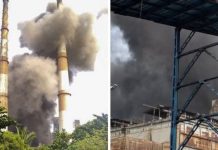Keezhvenmani is still steeped with poverty, sporadic jobs, and erratic income. While the incident saw its representation in literature and movies, it has failed to remain fresh in the collective imagination of the subaltern in their demand for justice.
Rajeshwari | The New Leam

While the rest of the country celebrates Christmas with fervour and cheer, Keezhvenmani, an obscure town in the Nagapattinam district, Tamil Nadu, mourns for the 44 Dalits who were massacred by the land-owning dominant caste for demanding justice five decades ago on 25 December, 1968.
Keezhvenmani massacre often finds mention as one of the earliest and most violent crimes in post-independent India in the discourse over the atrocities committed over Dalits. This year marks the 50th anniversary of the massacre that shook the conscience of the state.
Land and labour are often the sites for conflict for caste and class. Class and caste interplay can usually be defined in relation to ownership of land, annexation of the surplus, and establishment of bureaucratic and military sharing of wealth and power. Within this entangled relation, whenever the oppressed have raised their voices to demand what is rightfully theirs, it has often been meted with gruesome violence.
In the 1960s, the Tanjore district was one of the chief places for paddy cultivation, producing one third of the entire produce of the state. However, the steeply embedded economic and social inequality and skewed institutions of power resulted in 4% of the cultivating households holding 26% of the land under their control. Tanjore also had the highest proportion of landless labourers at 41% with most of them being Dalits usually working as bonded labourers in the fields of the land-owning castes. With the rising momentum of the communist movement in the district, the labourers united to demand for their rights under the aegis of CPI (M). While this resulted in the abolishing of Zamindari system and the passing of Tamil Nadu Tenants Protection Act, 1955, the landless labourers still did not benefit from it as now they went from being bonded labourers to highly exploited daily wage workers.
The tensions between the Mirasdars and the newly unionised Dalit labourers steepened in 1966 due to economic fallouts and drop in agricultural produce. This resulted in the land-owning class using their ‘constitutional right’ organizing themselves into a union- Paddy Producers Association, to safeguard their own interests.
The newly unionised Mirasdars refused to comply to the labourers’ demands for increased wages and instead bought in workers from outside when the Dalits resisted. This resulted in clashes between the local and the outside labourers resulting in the death of a labourer from outside the village. Apart from this, three agricultural workers and prominent members of CPI (M) were also ruthlessly murdered.
Amidst these ensuing clashes, in December 25th, 1968, the Mirasdars and their henchmen surrounded the hutments of the Dalit labourers, cutting all routes of escape, and shot the labourers and their families who could throw stones or flee from the spot to protect themselves. Many labourers, women, children, and elderly who sought protection in a nearby hut, the oppressors set the hut on fire and burnt it down with people in it. The arson resulted in death of 44 people, of which 16 were women and 23 children, and 5 were elderly men.
The massacre during that time, did not evoke the collective conscious of the public, as it was met with apathy from the government as well as the mainstream media that reported it. The event was covered in isolation and removed from the dimensions of the entangling class and caste; it was reported as a conflict between two groups of farmers. Post the incident, the class-caste entanglement of the issue can be observed between the contestations of the CPI (M) and Puthiya Tamilagam and Viduthalai Chiruthai Katchi (Liberation Panther Party) towards their claim to memorialise it as class uprising versus caste-based atrocities.
Anand Teltumbde, a Dalit scholar and activist remarks the indifference of the media towards caste issues. He argues that caste violence, even within a superficial gaze complicates reality. As it centers on the discourse of non-Dalits attacking the Dalits, it becomes difficult for both the reporter and the consumer of news to distance themselves from the story because they share the same value system that caused the violence in the first place.
Five decades since the incident, the condition of the village hasn’t changed much. The village is still steeped with poverty, sporadic jobs, and erratic income.
The incident saw its representation in the literature and movies, it has somehow failed to remain fresh in the collective imagination and demanding a discourse on class-caste struggle of the marginalized towards justice.
The Venmani incident makes one question the exclusivity of collective memory- what gets remembered and what is often chosen to be forgotten and the social positioning which permeates that selectivity of memory. Within new lines of organization of society in post-colonial times, the question of caste still looms as a shadow. The warning issues by Ambedkar to the Indian socialists and the communists in 1936 still holds its force- that the question of caste has to be grappled with post revolution if not taken into account before revolution. It brings to the front the rising need to acknowledge an organized struggle against the caste system and oppression of women within the class and mass movements.














